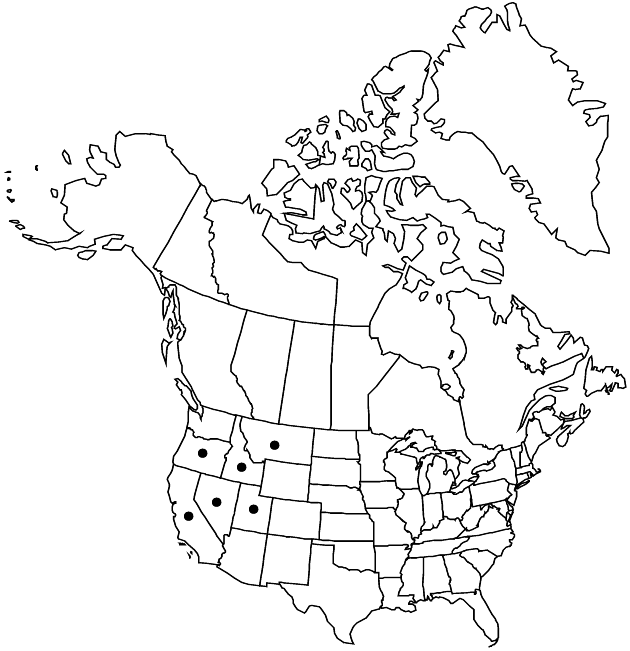Ericameria nana
Trans. Amer. Philos. Soc., n. s. 7: 319. 1840.
Plants 5–50 cm. Stems erect to spreading or recurved, green when young, soon becoming tan to brown, then nearly black when older, highly branched, twigs glabrous, glandular, usually resinous. Leaves ascending to spreading; blades usually elliptic to oblanceolate, occasionally spatulate, 10–15 × 0.5–1.5 mm, mostly adaxially sulcate, margins entire, midnerves usually obscure to weakly evident, apices acute, apiculate, faces glandular, sometimes irregularly gland-dotted (in shallow pits), resinous; axillary fascicles present, persistent. Heads in congested, cymiform arrays (0.5–2.5 cm wide). Peduncles 0.2–5 mm (mostly ebracteate, glabrous). Involucres obconic, 5.5–7.5 × 2.5–4 mm. Phyllaries 22–30 in 4–5 series, mostly tan, lanceolate to elliptic, 2–6.5 × 0.5–1.2 mm, strongly unequal, outer sometimes herbaceous or herbaceous-tipped (body apices obtuse or truncate to retuse, appendages erect), midnerves not evident or slightly raised, slightly expanded subapically, (mostly margins narrowly membranous, entire) apices acute to acuminate or attenuate, mid often aristate to cuspidate, abaxial faces glabrous, resinous. Ray florets 1–7; laminae elliptic, 3–4 × 0.8–1.3 mm. Disc florets 4–8; corollas 4.5–6.5 mm. Cypselae tan, narrowly oblanceoloid, 4–5.5 mm, glabrous or densely sericeous; pappi tan, 4–5.5 mm. 2n = 18.
Phenology: Flowering summer–fall.
Habitat: Arid rocky plains, desert mountain cliffs, crevices
Elevation: 1300–2900 m
Distribution

Calif., Idaho, Mont., Nev., Oreg., Utah.
Discussion
Some populations of Ericameria nana exhibit extreme variation in leaf shape and in phyllary apex length and shape. Whether such variants represent distinct taxa remains to be tested.
Selected References
None.